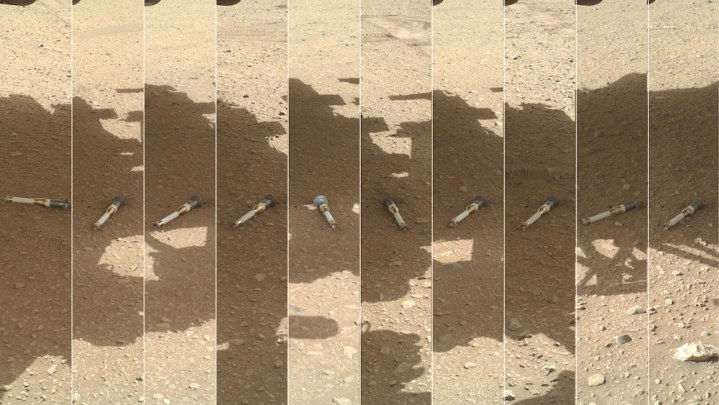NASA’s Perseverance Mars rover has been busy creating what the space agency recently said was “humanity’s first sample depot on another planet.”
The depot, which is essentially a flat patch of land, contains 10 titanium tubes holding samples of martian rock and dust collected by NASA’s rover in the two years since it landed on the red planet.
NASA is planning to bring samples of martian material to Earth for detailed analysis in the Mars Sample Return (MSR) mission that’s expected to take place in the 2030s.
On Tuesday, NASA shared a panorama showing the sample tubes laid out on the ground. The panorama was created by stitching together 368 images captured by Perseverance’s Mastcam-Z camera, and you can zoom in to view any part of the picture in astonishing detail.
It also posted a regular image (below) that clearly labels all of the deposited sample tubes.

Another image, created using images from Perseverance’s Watson camera, also features all of the sample tubes.

NASA points out that the depot is actually a backup system that will only be used if another set of samples held by Perseverance fails to be successfully transferred to the collection vehicle — the Sample Retrieval Lander — during the MSR mission.
“While the martian surface is now cold, dry, and generally inhospitable to life, ancient Mars was likely similar to Earth and could have supported microbial life — if any ever formed on the red planet,” NASA said.
It’s therefore hoped that scientific analysis of the samples collected by Perseverance could unlock many of the secrets that Mars still holds, including a definitive answer on whether any form of life existed there.
Perseverance is working alongside the Ingenuity helicopter and both vehicles are also gathering data to aid the first human mission to Mars, a historic event that could take place sometime in the 2030s.
Editors' Recommendations
- NASA video maps all 72 flights taken by Mars Ingenuity helicopter
- It’s exactly 20 years since a Mars rover took this historic image
- Relive Mars rover’s spectacular landing exactly 3 years ago
- NASA’s damaged Ingenuity helicopter spotted in Mars rover photo
- NASA reveals how Mars helicopter just kept getting better and better


